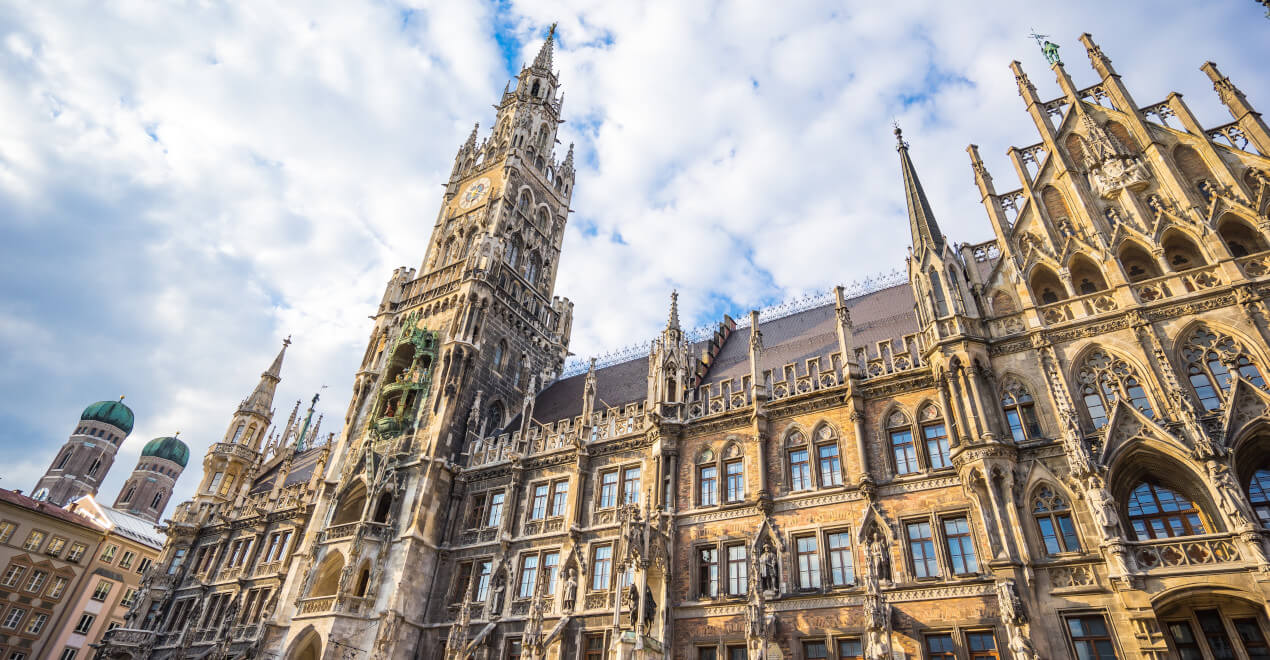
Assistance
Click to start searching
The carillon in the heart of Munich

In the historic centre of Munich is Marienplatz, literally "Mary's square", which is one of the most highly regarded places by Munich residents. It is the true heart of the city, whose beats are marked by the Glockenspiel, the largest carillon in Germany and the fourth largest in the world.
Since its creation in 1158, the square has been the social and economic centre of the city as it is home to the city market - in fact its original name was Markt, "market". Today the market has moved to another area, but Marienplatz continues to be a very popular gathering and meeting place. Its new name comes from the belief in which the Virgin Mary would have interceded in putting an end to the cholera epidemic in 1854. Which is why the square was officially dedicated to her in 1850.
The square is also nicknamed "New Town Hall square" as the building was rebuilt relatively recently. In 1867, the city of Munich decided to rebuild the administrative headquarters, entrusting the project to the Austrian architect Georg von Hauberrisser and, to create the extra space needed for the new structure, 24 houses next to the square were demolished. The works were finally completed in 1909, but already in 1906 Emperor Wilhelm II defined it as "the most beautiful Town Hall in the country".
The Town Hall tower contains the Glockenspiel, a mechanical clock made up of 32 statues and 43 bells that stage historical Bavarian events daily.
Every day of the year at 11:00 am, noon and 9 pm ( also at 5 pm from March to October) two different episodes from the 16th century are represented: jousting between knights in honour of the marriage of William V of Bavaria with Renata of Lorraine and the coopers' dance to celebrate the return of life after the plague epidemic that hit Munich between 1515 and 1517. As a conclusion, the golden rooster placed above the small stages moves its wings and crows 3 times.
The start of the show is preceded by the tower bells ringing to inform all spectators that the Glockenspiel is about to start up.
The 9 pm performance also includes good night wishes to the city by the young monk, the Münchner Kindl, who is put to bed with Brahms' "Lullaby".
The tower - except for the area housing the mechanism - is accessible to the public and guided tours in Italian are also available by reservation.
How to get to Marienplatz? It's very easy. As it is in the centre of the city, it can be reached by various metro lines: the U3, U6 and from the S1 to the S8. If, on the other hand, you prefer to travel by bus, take number 52.
Don't miss out on this unique display that Munich offers. Fly to Franz Josef Strauß Airport and easily reach the main city square by public transport to admire the famous Glockenspiel!